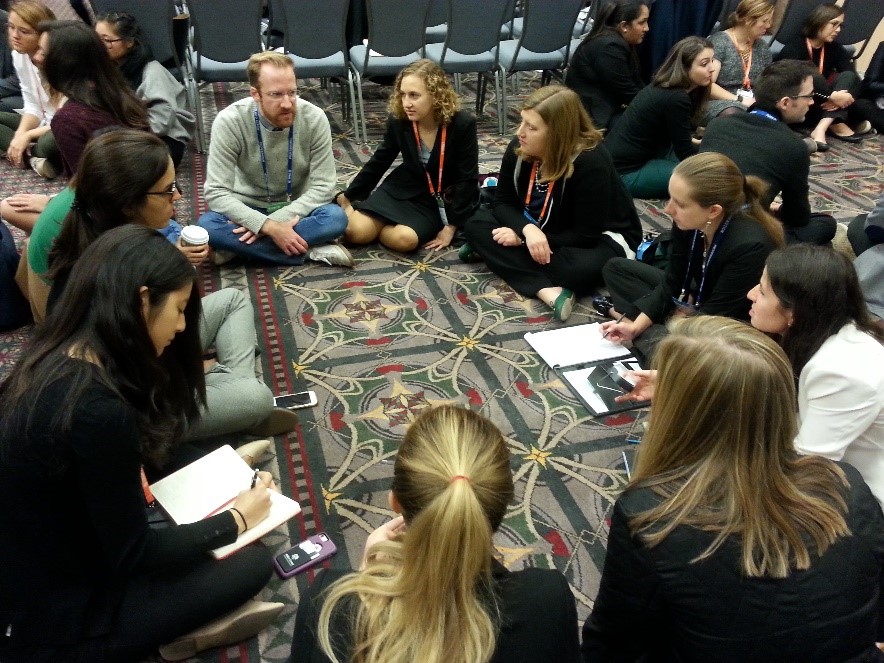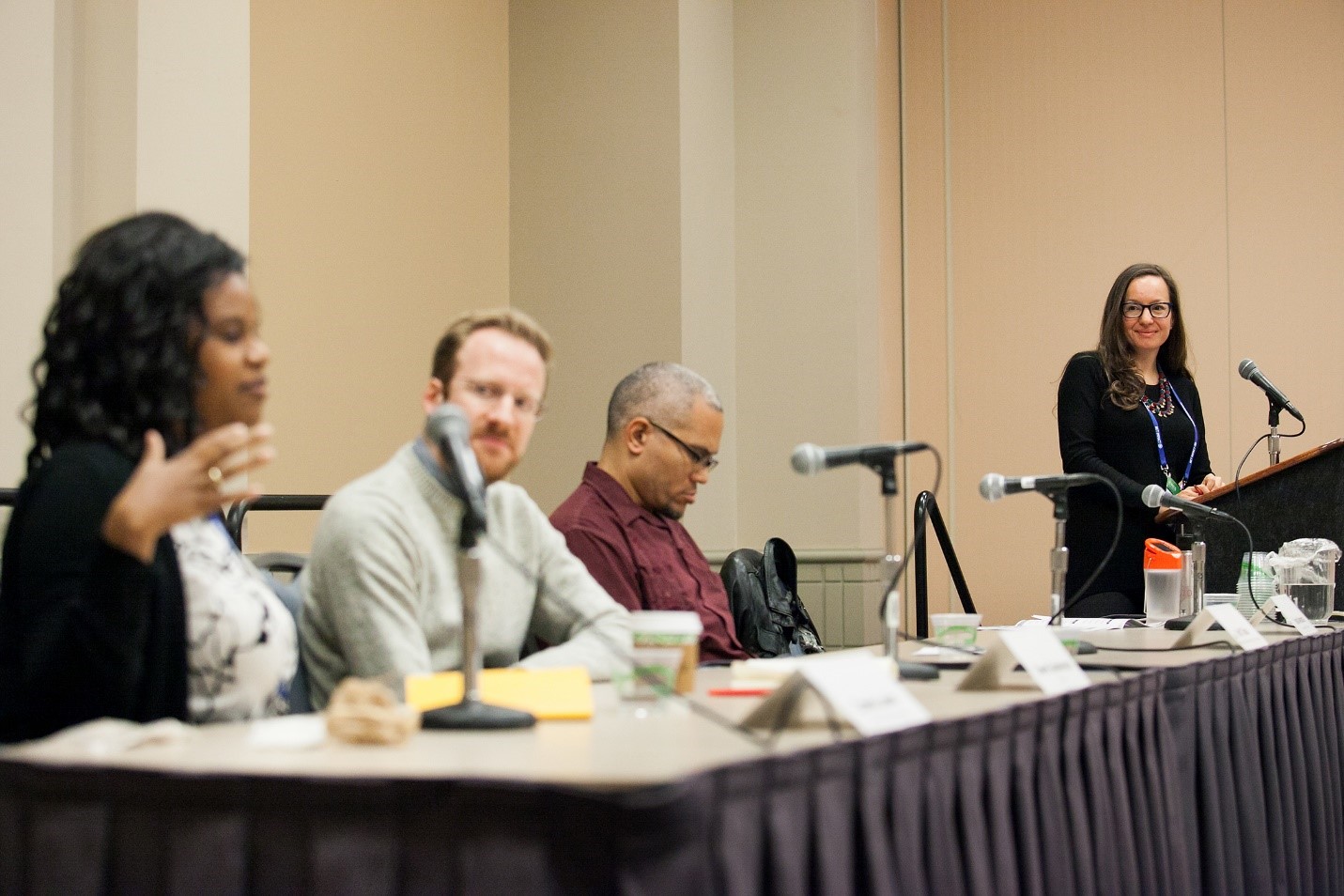4 Insights from Design Leaders at NI16

If you could ask top impact design innovators anything, what would it be?
An eager room full of students and young professionals got just that opportunity at the 2016 Net Impact Conference during a panel on Designing Products for Extreme Affordability in International Contexts. Led by Iana Aranda, Director at Engineering for Change, the conversation featured honest reflections from Owen Sanderson, Business Designer at IDEO.org, a design consultancy; Kofi Taha, Associate Director of the MIT IDIN Program, an academic R&D accelerator; and Connie Lewin, Director of Strategy at Sustainable Health Enterprises, an NGO specializing in product design. They discussed how they are all tackling designing for cultural relevance, last-mile, affordability, and quality to serve customers with the greatest need. Here, we share some key takeaways.
Take context into account
“Design around existing behaviors,” advised Sanderson. In one project IDEO.org is designing around an existing payment platform that many Kenyans were already using. Similarly, they also crafted a farmer chatbot project around Facebook Messenger, because “no one wants to download a new app.”
SHE learned that context can influence design as well. In Rwanda, there is a forthcoming ban on plastic bags as part of a 2020 vision to become a middle class economy and manage the environmental impacts of a consumer economy. SHE manufactures pads made of banana fibers through a patented mechanical process that makes the fibers work and stay consistent. However, to appeal to consumer desires, they feature splashy plastic packaging. SHE is thinking about how to balance these two forces with the upcoming new law.
“Look at analogous organizations,” Sanderson also shared. In their farmer-focused project, IDEO.org is building a wall of analogous examples of social capital and referrals (including AirBnB) and examples of artificial intelligence giving advice for the chatbot feature. Taha added that “what you need to do is think about the privilege you’ve had in seeing another way of working.” He noted that in creating the Apple store Genius Bar, designers studied hotel concierges.
All agreed that human centered design was an important tool in product design.
Get creative with funding
Designers are not immune to the need to create a sustainable business model for a solution to have ongoing impact. The panel discussed the importance of remembering to keep product quality as your most important focus, since the goal is typically to use a design to improve someone’s life rather than create large profit margins. Creative strategies are often needed. Sanderson suggested, “you can use payment plans, like a portion of each harvest so [the product] is still expensive and high quality, but isn’t expensive up front.” Taha explained how selling to high-income buyers in other geographies can be helpful to fund extreme affordability: “Sometimes design for extreme affordability means designing a venture that’s going to exist somewhere else.”
Some ideas should die
The panel acknowledged that not all impact design hits the mark, and humbly acknowledged times their own design process had meandered through solutions that didn’t quite solve – making again their point about the importance of keeping people and problem at the center of one’s work. One example they good-humoredly mentioned was Play Pump, which took the idea of harnessing the energy of a mary-go-round to pump water, the American idea of recess creating a win-win when by adding advertisements to the tank. With a great story and a nice idea, Play Pump received $15 million in funding. “Can anyone say child labor?” said Taha. “Also, who does most of the pumping? Women. And there were safety issues with concrete.”
Another cautionary tale was the Pee Poop Bag. It’s headline was that 2 million people just got a toilet, but it was still simply using the bathroom in a bag. Socket Ball also came up in discussion, a soccer ball that harnessed the kinetic energy of play for device charging. The issue was that the battered balls broke down quickly, unbeknownst to the well-meaning designers. When a journalist investigated and exposed this issue, the organization pivoted into empowering people about design and engineering through education – an example that Taha brought up as a successful pivot and one that learned from new research. So how does one avoid such pitfalls? Ask yourself, Taha recommends, “is this just a cool thing, ask if it is functional. You need that strong connection with people telling you this is what we want.”
Stay humble
 The panel had a lot to say about the pathway to practice. “About 70% of people in this room are women, and I want to acknowledge that many of the people leading this work and going out and building things are women,” Taha noted. Co-designing in an authentic way is key. Sanderson described how IDEO.org is working with local group Asili on one of their projects in the DRC.
The panel had a lot to say about the pathway to practice. “About 70% of people in this room are women, and I want to acknowledge that many of the people leading this work and going out and building things are women,” Taha noted. Co-designing in an authentic way is key. Sanderson described how IDEO.org is working with local group Asili on one of their projects in the DRC.
He also stressed the importance of ethics. “IDEO has a little book of ethics. Read it. Know yourself, know how you’re going to co-design.” Taha echoed Sanderson’s recommendation. “What you need to do is think about the privilege you’ve had in seeing another way of working. Then you have to ask, do I want to bring it to my new work as an expert of a facilitator. When you see yourself as a solution creator, then you see yourself responsible and that’s real development. There’s a real danger in the work you want to do. Looking at the base of the pyramid can just be a thing to exploit or you can shape this as a human experience where you’re learning, the people are learning from us, and we’re doing it with respect and humility so we’re shaping a process where we’re learning and growing as well. You can have these tools, but how you use them and how you operate matters too. Embrace the internal work as well.”
Iana added one last tip: “Humility is incredibly fundamental. I often hear my community saying ‘we’re going to teach them…’ and I’m like, no, you have to understand these people have been through extreme poverty and they know a lot you don’t know. Check yourself.”
Thank you to our incredible panelists for their honest and thoughtful discussion.
Hear from leading designers and technologists at the 2017 Net Impact Conference in Atlanta, October 26-28.
